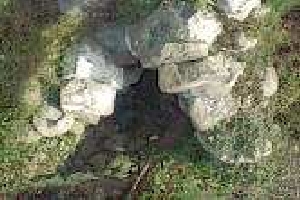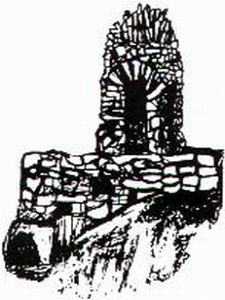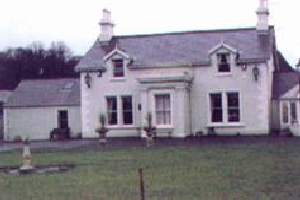Here is a list of Historical Wells To Be Found In Ireland.
Toberbracken Well 
This well lies in a hollow within a small circle of trees and is possibly within the remains of an earthen ring-fort, of which there is some slight evidence.
Believed in the past to be effective against cholera, a story is told of a man who rested by the side of the well, suffering from the disease, and for three weeks took no nourishment but water from the well. According to local tradition, the man was cured and eventually went to America.
Fr O’Donnell’s Well, Ardmore 
Ardmore is the oldest Christian settlement in Ireland. St. Declan lived in the period 350 -450 AD and christianised this area before the coming of St. Patrick. St. Declan’s feast day is “Pattern Day” every 24th of July.
Saint Patricks Well - Tipperary
It is one of the largest wells in Ireland, with a shimmering pool at its mouth and a 6th-7th century Cross mounted on a Plinth in the pool centre. In 1969, thanks to the efforts of the then Mayor of Los Angeles, Sam Yorty (whose mother was born in Clonmel) the Irish Israeli Society of South California and the St. Patrick’s Day Society Clonmel much needed restoration and landscaping was carried out on the well site. It has now become as well known as a tourist attraction as a place of Pilgrimage.
Struell Wells, Downpatrick
Struell wells are hauntingly located in a rocky valley between Downpatrick and Saul, and since medieval times and probably before, they have been the resort of pilgrims who came here in search of cures which they believed the waters from the wells could provide. The buildings are grouped in and around a roughly triangular grassed area, in the centre of which is a small structure known as the Eye Well. At the north-eastern end is a rectangular church building of c. 1750, but probably never completed. Beside it is the Drinking Well, from which the water flowed underground through the Eye Well to the two bath houses located at the south-eastern end of the complex. The smaller of the two was reserved for women, while the larger - barrel-vaulted and roofed with large stone slates - was the men’s preserve.
Abbey Assaroe Mills And Waterwheels
The only remaining wall of the original church sta  nds, and walk the short distance to the mill. Founded by the Cistercians in the 12th century, the development of the waterwheels to provide mechanical power was mainly motivated by a desire to give this contemplative order more time for prayer and relection.
nds, and walk the short distance to the mill. Founded by the Cistercians in the 12th century, the development of the waterwheels to provide mechanical power was mainly motivated by a desire to give this contemplative order more time for prayer and relection.
The derelict site was wonderfully restored by the Abbey Mills Restoration Trust when they acquired the property in 1989. Besides the impressive waterwheels, the centre now contains an interpretative centre where an audio-visual presentation traces the legacy of the medieval Cistercians in Ireland.
A coffee shop will help you relax and enjoy the attractively landscaped grounds. The well is located on the Rossnowlagh road from Ballyshannon for 500m, turn left and follow signs at Abbey Graveyard.
Brookhall Historical Farm 
Open farm with farm museum, gardens, tea house, craft and antiques shop and farm animals. Building which represents a 12th century place of worship and a beautiful closed garden which is an ancient burial ground. Also a holy well which is used for its healing properties.
St Augustines Well, Galway City
Water has always played a major role in Irish history, first in pagan and later in Christian times. Galway city had many holy wells some of which were credited with curing various ailments.
One such sacred spot, St Augustine’s Well can still be seen by Lough Atalia, on the east side of the city.
Saint Columb’s Well, Derry
St Columb’s Well at the bottom of Fahan Street in the Bogside is one of three wells dating back to St Columb’s period of residence in Derry. The original site of St Columb’s monastic church at Long Tower is close by. Legend tells of St Columb praying here when a child was brought to him for baptism. No water could be found. St Columb was said to have blessed a nearby stone and from it water sprang forth. This is how the well originated and to this day the annual Feast of St Columb is celebrated with much fervour in the area. Admission is free and the Well is open all year.
